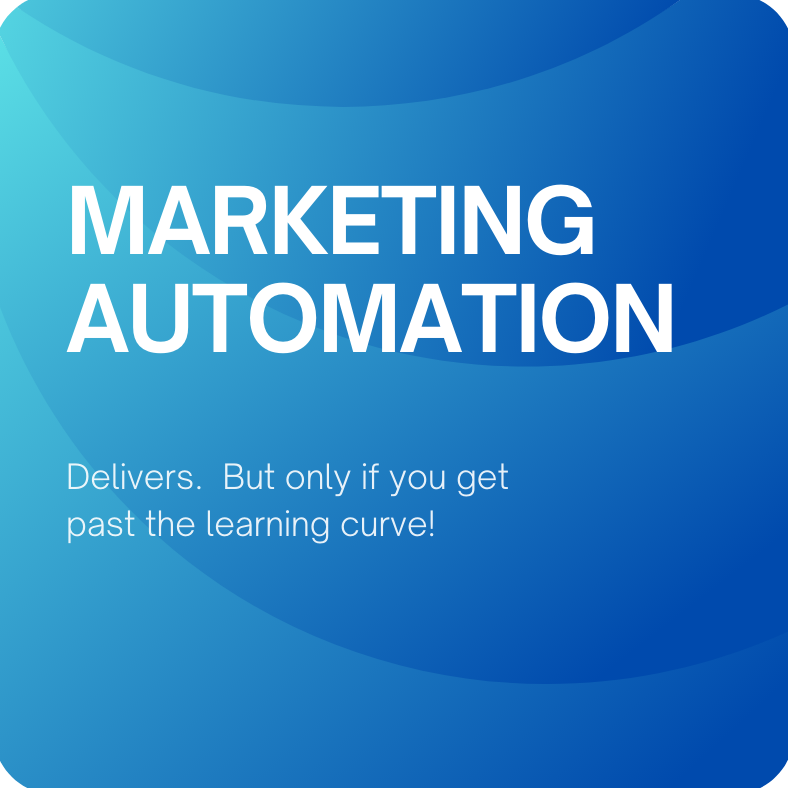A client asked me recently what the difference is between marketing automation and CRM and why they needed both systems as part of their fundamental infrastructure.
CRM solutions like Salesforce target sales and business development folks and the tasks that are important to them, especially how to input, manage, and track their leads. The unit of measurement used is an opportunity.
However, CRM systems don’t do a good job of recording all the marketing activity that happens through multiple channels. For this, we need marketing automation. Most marketing automation applications are designed to do 7 core things:
1. Lead Generation
- Make sales happy with more qualified leads
- Convert website traffic into leads, automate lead development, identify when prospects are ‘sales ready’ (or marketingqualified), automate sales tasks and track follow up.
2. Lead Nurturing
- Drive revenue by nurturing raw inquiries into ‘sales ready’ leads
- Nurture relationships with qualified prospects, educate leads before passing them to sales, trigger relevant responses to prospect behaviors and automate repetitive marketing tasks.
3. Lead Scoring
- Improve sales effectiveness by passing only qualified leads to sales.
- Automate lead qualification processes, measure prospect interest and engagement, score leads using demographic data and behavioral data and focus sales resources on the best opportunities.
4. Website Tracking
- Know exactly who is visiting your website and where they go
- Track all prospect interactions online, identify which companies are visiting your website, monitor known and anonymous visitors and automatically alert sales reps of new prospect activity on the website
5. Email Marketing
- Don’t just email prospects, engage them in a dialogue
- Deepen relationships with triggered, multi-step campaigns, get to the inbox using the latest deliverability technology, raise and open click rates by targeting segments and track and score who opens and clicks on each email.
6. Landing Page Optimization
- Create, publish and test targeted landing pages
- Launch new landing pages in minutes, use your own branding and subdomain, maximise conversion rates through A/B testing and capture leads with smart forms that recognize people who have been to your website before and “know” the difference between a prospect and a customer.
7. Marketing Asset Management
- Store, distribute and track content and other marketing assets.
- Upload and manage documents and image files, publish customized URLs for each asset, track which piece gets viewed by prospects and notify sales reps whenever key marketing assets are viewed by a customer or prospect.
Of course, your marketing automation application will work best if it is integrated with your CRM system. Here’s why:
1. Manual exporting sales-ready leads gets old fast
Sure you could manually export ‘sales ready’ (we like to call these marketing-qualified leads) leads from your marketing automation product into Excel and then have someone manually upload the list into your CRM product. But why? Any manual process is bound to fall down, especially today, when the focus is on real-time marketing (and by implication, sales.) Integration makes short work of this process.
2. Sales needs, wants, and deserves to know the full marketing history
Don’t silo off the information. Instead, marketing automation applications should integrate in with CRM so that your sales people can get the entire marketing history at their finger tips. This should include: how a prospect or customer has been communicated to by marketing, the pages they’ve viewed on your website, how much time they spent on various pages, and how they responded to various marketing campaign. This is actionable insight about what the prospect or customer is interested in that your sales people can leverage when calling on the prospect or customer.
3. Closed Loop Return on Investment (ROI) reporting
The only way to tell what marketing campaigns are working to drive sales is through integration of your marketing automation and CRM systems. Otherwise, you risk focusing your marketing team on driving traffic or leads … without understanding what kind of traffic or lead is converting into initial sales and ultimately repeat purchases. Lifetime value matters.
